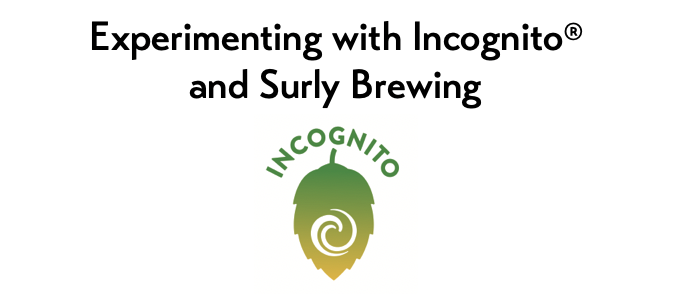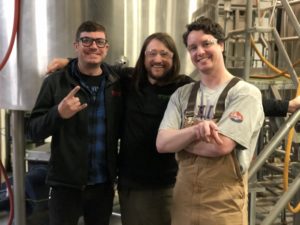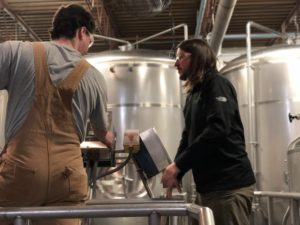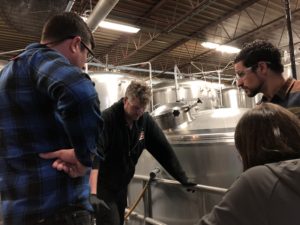Experimenting with Incognito® and Surly Brewing
R&D hop scientists have been working for years to develop next-generation technology that will help brewers get the most out of hops.

Josh Lemke, Lead Brewer at Surly Brewing, carefully slid the 2-kilo jugs into a warm bath as we got ready to dose the whirlpool. I have to say, I was pretty excited. I’d been part of the R&D of Incognito® for more than a year now, but today was the first time I was with a customer doing live experiments with John I. Haas’ innovative new hop concentrate.
Dosing extract has always been a challenge, but the game changed when you could pour it out of a jug and dissolve it into solution. Now, it’s one thing to explain that to a brewer. It’s something entirely different to watch them brew with Incognito firsthand.
Josh was working alongside Surly’s Head Brewer, Ben Smith. Ben studied at UC Davis in Charlie Bamforth’s program. He is one of the top brewers in the U.S. and now leads Innovation and R&D at Surly Brewing in Minneapolis. Ben is on the MBAA technical committee along with Incognito project manager Michael Visgil. The two got to talking and, eventually, the teams at Surly and Hass decided to collaborate on a 4-phase trial that would look into many aspects of the brewing process. Phase 1 was off to a great start.
The long winding road to Incognito
In the early days of craft brewing, pioneers like Sierra Nevada would only use whole cone hops. With it, they were able to extract flavor unlike any in the industry. There is no doubt whole leaf hops generate massive flavor, and pale ale with its pine and resinous taste paved the way for a craft beer movement.
Today, some brewers still use whole leaf hops, but most use T90 pellets to achieve the flavor they want and to save some of the wort from getting absorbed by the hop cones. After T90 pellets came the enhanced hop pellet or BBC hop pellet. Then came T45 pellets and T35 powder. The goal behind each of these advancements was to help improve beer quality while giving brewers tools to experiment with flavor and efficiency.
Macro breweries have been using pellets for years, and many took it a step further by upping their yields by utilizing hop extract. But craft brewing wasn’t so quick to follow.
Over the past 30 years, the number of craft breweries has grown from 7 to 7,000. During that time, beer styles have morphed and changed with a focus on flavor—and so have consumers’ tastes and expectations. Craft volumes have skyrocketed and, while flavor matters, so do yields and shelf life. It became apparent to craft brewers that the complexities of brewing and packaging more beer would need to be evaluated and improved.
R&D hop scientists have been working for years to develop next-generation technology that will help brewers get the most out of hops. This has been the mission of those working behind the scenes at the John I. Haas Innovations Center in Yakima, WA. It’s why you have the first flowable high alpha bittering solution, FLEX®. It’s why Surly is able to experiment with the first flowable hop concentrate, Incognito. And it’s why many other products are being developed as you read this post.
Axe Man has been a staple of Surly’s brand portfolio from the beginning. But if you’re adding 3 pounds per barrel of Citra® and Mosaic® to your whirlpool, you’re bound to have losses. So how do you maintain true to the flavor while increasing efficiencies?
You experiment with new technologies. You run analytical data on the beer. You look at anything and everything to see what works best. Finally you taste and taste with trained panels. Maybe in the end you decide to keep things the same. Or, maybe, the research shows that you can achieve your flavor goals consistently with increased yields. In the end, it just might result in a new a new style. A new process efficiency. And a happy customer or two.
Back at Surly Brewing, the Incognito trial is progressing well. The beers have been brewed and evaluation continues. We look forward to updating you on the trial results.
Cheers!






